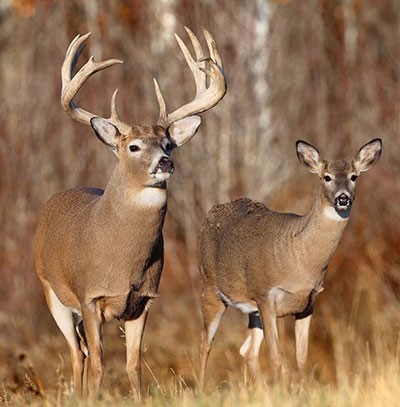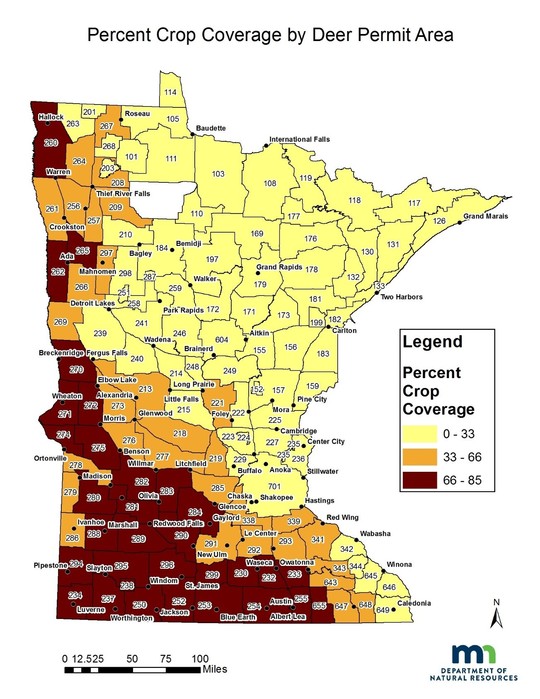Attention Minnesota deer hunters! DNR needs your help.
|
|
|
October 29, 2019
Help us assess deer exposure to neonicotinoids

Spleen samples sought statewide to help DNR map potential exposure
DNR is conducting a pilot study to screen hunter-harvested deer for the presence of neonicotinoids, and we need you to send in a spleen sample.
Neonicotinoid pesticides are insecticides that are applied through seed treatments, in foliar sprays, applied granularly to pastures and injected into trees.
A recent study in South Dakota found that white-tailed deer exposed to high levels of neonicotinoids, in a controlled setting, showed behavioral changes and also had reduced fawn survival. We want to determine if wild deer in Minnesota are being exposed and to what level.
Using the density of row crops (corn, wheat and soybeans; see map below) as basis for potential exposure, we hope to collect a total of 800 samples equally divided in areas with low, medium and high row crop density.
If significant exposure is found in a part of the state, we can design a more specific study to understand how those deer are being exposure and what the specific population affects may be.
|

|
|
Finding the spleen
The sample we need for testing is the spleen. The spleen is large, dark red, flat and shaped like a cat tongue. It’s attached to the stomach (rumen) of a deer and easily found when field dressing. We've prepared a video to help you out.

Sign up online to participate
Watch the video above and determine whether you're comfortable finding and sampling the spleen in your deer. If you are, sign up for our study online. You'll receive a small sampling kit in the mail with instructions, a link to the spleen video above and a postage-paid return box that you can simply drop at your closest UPS location.


What you'll get in return
- We will age your deer for free! Just collect a tooth from your deer (instructions will be provided with the kit), and we’ll pay for the testing.
- When results are back, we’ll send you a letter detailing the age of your deer and level of neonicotinoid exposure that was found.
|
|
|
Hunters make projects like this happen
Thank you for your help and support with this research project. We wish you the best of luck this upcoming season. Questions? Contact Dr. Eric Michel, DNR farmland deer project leader, at eric.michel@state.mn.us or 507-578-8918.
|
|